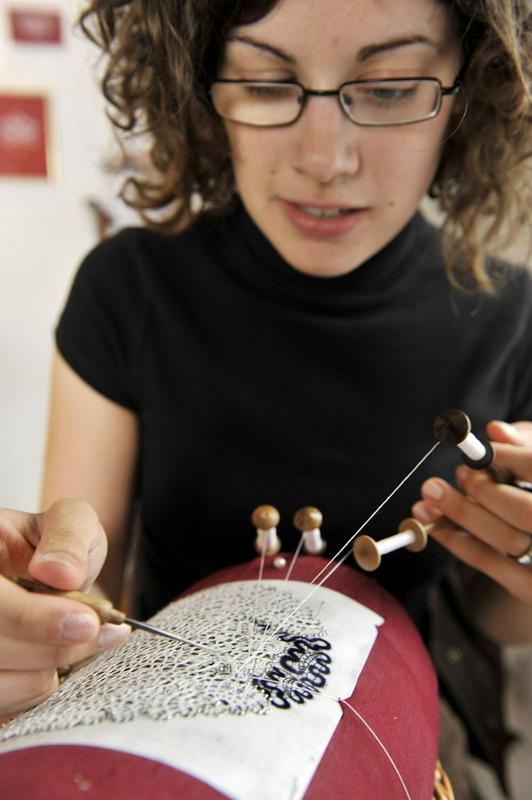

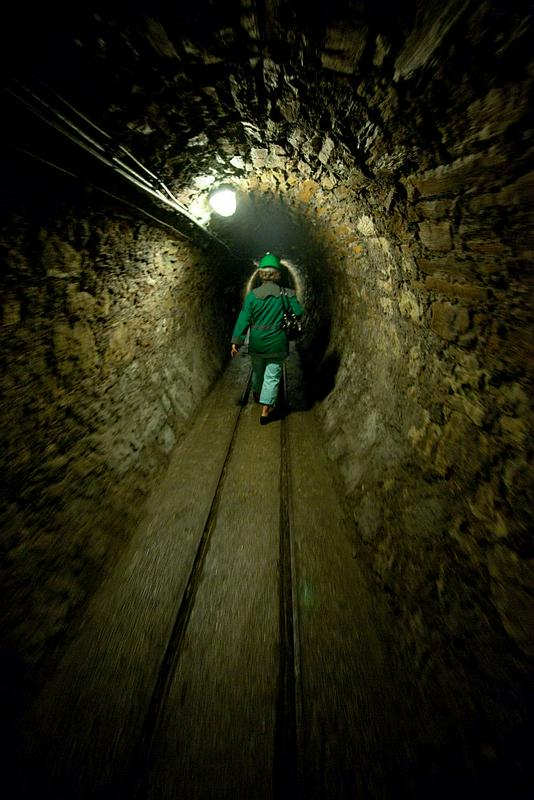

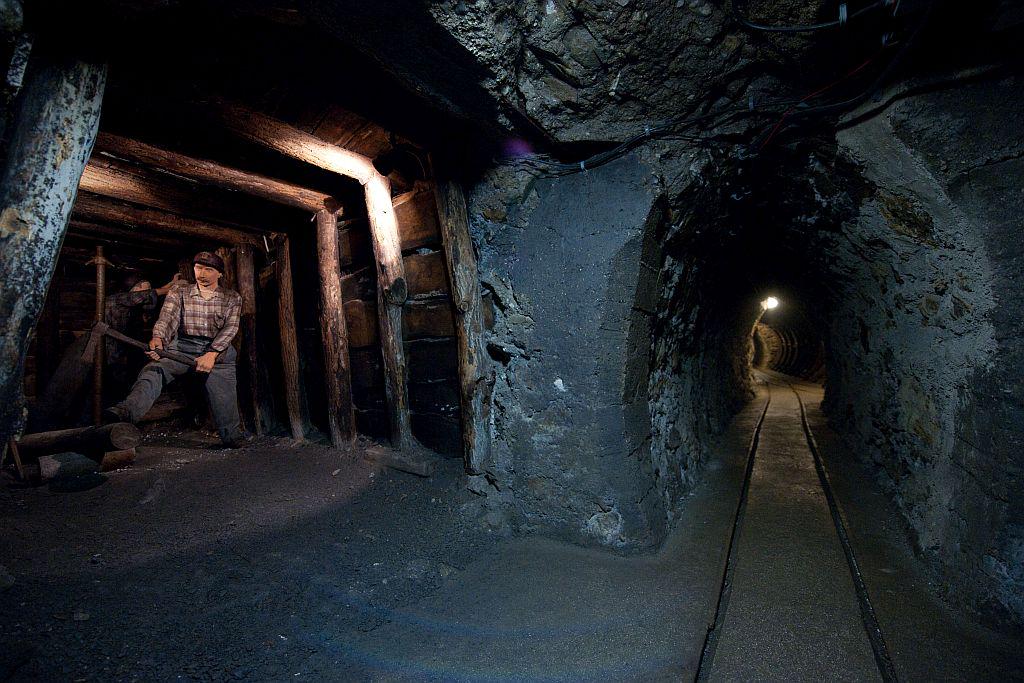
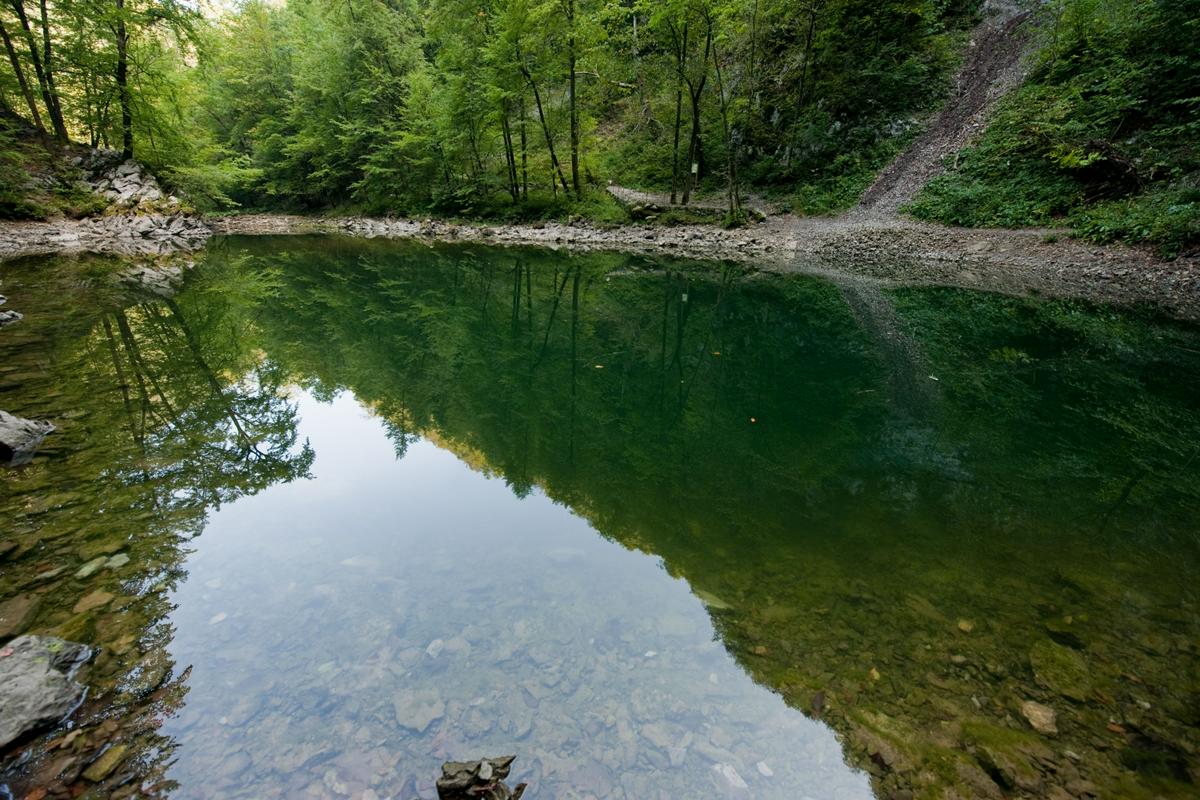
The Idrija Tourist Information Centre can be found on Mestni Trg, right in the heart of town. As expected, it is the place to head to first if you have any queries regarding the many sights in Idrija, and it’s also the best place to hire a knowledgeable local guide, or to ask a friendly English-speaking member of sta some basic questions before heading out on your own. Don’t forget to make a return visit before you leave to pick up the necessary postcards, souvenirs or other gifts - including of course a selection of authentic handmade Idrija lace.
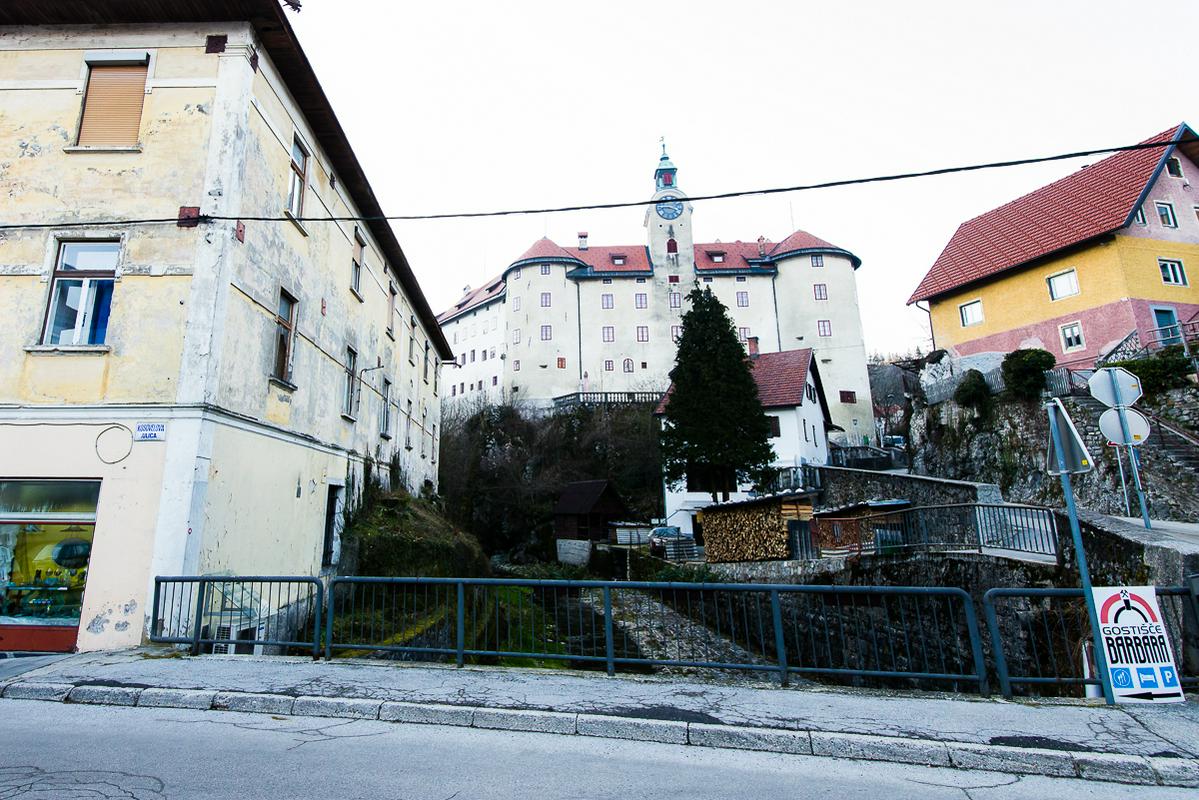
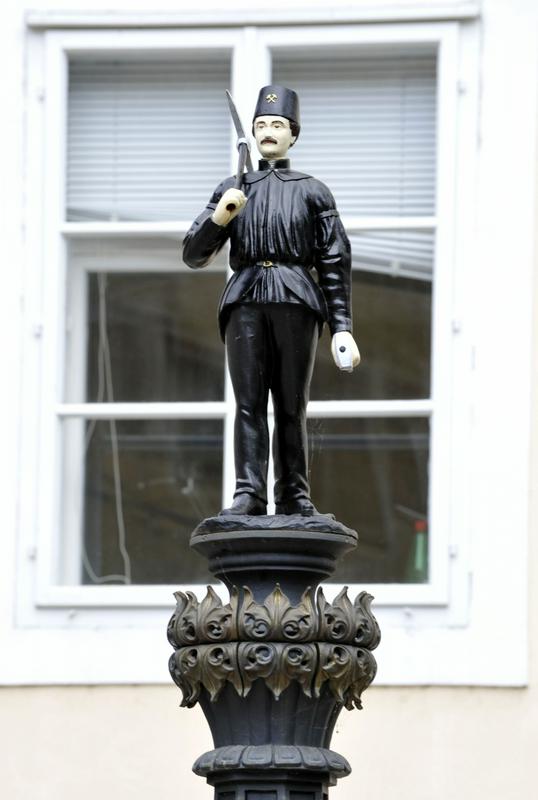
If you mention the name Idrija to most Slovenes, two words immediately come to mind (mercury and lace), perhaps followed shortly thereafter by a third (žlikrof). The discovery of the what would grow to become the world’s second largest mercury mine here in 1490 led to nearly 500 years of prosperity and growth associated with the mining industry, while a unique lacemaking tradition developed amongst the wives and daughters of miners, which still continues to this day. The trifecta is rounded out by žlikrofi, a distinctive ravioli-like culinary speciality that became Slovenia’s first offcially protected dish in 2010.
While this would be enough to put most towns of around 12,000 residents on the map, Idrija’s tourism o er goes well beyond its most famous individual elements, combining it's rich historical, industrial, natural and cultural heritage into one well-organised package. Within easy driving distance from both the Mediterranean coast and the Slovene capital Ljubljana, Idrija nevertheless feels as if it’s hidden away from the outside world by the three plateaus that converge around it. Thanks to this natural beauty (which includes the country’s first protected natural monument) and perhaps even more so to the foresight that led local industries to diversify away from mining, Idrija was not only able to avoid the economic hardships that befell other former mining towns, but has continued to prosper as a tourist destination - the culmination of which was its designation as a European Destination of Excellence in 2011, followed by making the prestigious UNESCO World Heritage list in 2012.
Idrija’s award-winning city museum is housed in the 16th-century Gewerkenegg Castle, which towers over the old town from its perch on a small hillock to the west. Built in the 1522, the castle’s somewhat odd sounding name is said to have come from the old German word for ‘mine’ or ‘mining company’ (Gerwerke) and the surname of the Habsburg vice regent (Jurij Egg) who was in charge of the mine at the time of the castle’s construction. First used as a simple storage facility for wheat and mercury, the castle long-served as the administrative o offices for the mine, and at various times over the centuries parts of the castle also functioned as o offices for other enterprises, schools and residential quarters. It has been the home of Idrija’s Municipal Museum, and music school, since 1953, which boasts a total of 26 separate exhibition rooms that cover a total space of 1300m2. The museum’s highlights include the mineralogical and petrographic collection, where among other items you can view a bowl of liquid mercury with a solid iron ball floating in it and pick up a mercury-rich chunk of cinnabar, and the Idrija lace collection, which was opened in 2008 and details the history of the city’s lace production from its 17th-century beginnings all the way up to modern lace fashion by some of Slovenia’s top designers. Other exhibitions not to be missed are the so-called Mercury Tower (which combines mining equipment with modern art), a collection of artefacts from the time of Italian and German occupation, and a fine modern art collection donated by Idrija-born Valentina Orsini Mazza. It was named the best European museum of industrial and technical heritage in 1997, and also received Slovenia’s top museum prize in 2008.
ANTHONY’S SHAFT: Anthony’s Shaft is the oldest part of Idrija’s unimaginably expansive underground world, which was once comprised of some 700km of tunnels. Located at the spot where the mine was initially dug in the year 1500, an 18th-century building called now serves as a living museum, education centre and entry point for tours into the mine itself. Most visits begin with a screening of a short lm (available in several languages) that gives a detailed history of the mine, from its geological origins to its discovery in 1490 by a now legendary bucket-maker and the ensuing development and expansion of both the mine and town that occurred as a result. Special attention is paid to the lives of the hard-working miners whose sweat and blood made it possible, and prepares viewers for the journey they are about to embark on.
While the majority of the mine was back filled before being officially closed in 1995, part of that still open has been set up for tours, which take visitors some 100m below the earth’s surface and provide a firsthand experience of the conditions the miners worked under. One of the subterranean highlights is the 18th-century chapel of the Holy Trinity, with statues depicting the patron saints of mining, St Barbara and St Acacius. The tour lasts around an hour and a half, and once you’re back up in the light of day there’s a small gift shop where sadly you can’t buy any liquid mercury (as this would be illegal), but you can ask to hold a small glass jar of the stuff they have behind the counter - be careful, it weighs a couple of kilograms!
MINER’S HOUSE: If you come here before heading down into the tunnels below Anthony’s Mine Shaft, the low ceilings, dark walls and slightly miniaturised furnishings will likely feel claustrophobic. On the other hand, if this is your second stop of the two, then it may feel down- right spacious in comparison. The point being, Idrija’s miners tend- ed not to be the largest of people, and their homes were built accordingly. Consisting of four floors rising up out of a foundation not much larger than 20m2 the houses were usually shared by several families, and are still a common sight in and around Idrija. However, most have long since had their interiors remodelled to incorporate modern comforts and larger spaces, with the house at Bazoviška 4 being the only exception.
CHURCH OF THE HOLY TRINITY: More than just an active building of worship or a monument to over five centuries of architectural styles, this small church perched up the hill from the main square is the symbolic heart of Idrija and a testament to the town’s history of wealth, perseverance and preservation. Set on the very spot where mercury was first discovered in 1490 the church initially took the form of the small wooden chapel, which was subsequently expanded and modified over the the next two hundred years. With the completion of the much larger parish church of St Barbara at the beginning of the 18th century, the Holy Trinity was left neglected and had fallen into disrepair by the middle of the 19th century, so much so that the townspeople considered turning it into a store room for mercury, or even demolishing it altogether. Luckily, the archbishop of Ljubljana at the time, Alojzij Wolf, who coincidentally happened to be from Idrija, interceded to ensure that the church was protected. In the early 1980s, the municipality undertook lengthy renovations, which restored the building and furnishings while emphasising its contrasting stylistic elements. The one embellishment made was the addition of some exquisite stained glass windows around the presbytery that combine Biblical themes with Idrija’s history, and are perhaps now the church’s most interesting detail.
DIVJE JEZERO: Literally translated as ‘wild lake’, there’s more to this small pool of water than meets the eye. Found only a couple of kilometres south of Idrija, at the base of nearly 100m high sheer rock cliffs, the setting is undeniably impressive, especially during the spring months when several varieties of native flowers cover the surrounding area in a car- pet of white, yellow and intense purple blossoms. While we were admittedly sceptical when first told by locals that the lake was bottomless, not only is this claim true, but several experienced divers have lost their lives trying to find its subterranean source. What is currently known for sure is that the lake originates from a Vauclusian karst spring of at least 400m in length and more than 160m in depth, and is the second most important spring of this type in all of Europe - with only the namesake spring outside the village of Vaucluse in Avignon, France more well-known. Fed by a series of underground waterways that cover an area of some 125km2 above ground, during the heaviest rains the lake can discharge an enormous 100m3 of water per second into the 55m long Jezernica river (which is the shortest in Slovenia), while during the drier autumn months the ow can slow to a trickle and the river completely disappears. In 1967, the area was designated as the first protected natural monument in Slovenia, and now includes a small walking path, signs detailing some of the extensive ora and fauna and benches on which to rest while contemplating the magnitude of what lies beneath the turquoise surface.
KAMŠT WATER WHEEL: While the aged stone building surrounded by sports fields and tennis courts along a bend in the Idrijca River is impressive enough from the outside, the façade gives few hints as to the magnitude of what’s contained within its walls: namely, the largest wooden wheel in Europe. Measuring 13.6 metres in diameter, this absurdly large structure was built in 1790, and operated more or less continuously until 1948. Idrija’s miners began building such wheels as far back as the end of the 16th century in order to supply power for lifting ore and pumping water out of the pits. Somewhat ironically, they were also powered by water, which in this case came from a channel that was diverted 3.5km upriver and still serves as a popular jogging path nowadays. When it was operational the wheel rotated at the very judicious rate of 4.5 revolutions per minute and managed only a modest 100 horse-power, however, thanks to its girth it was still able to pump approximately 300 litres of water per minute from depths of almost 300 metres. Although the wheel and its premises were completely restored in recent years (and look as if they could have just been built!), not only is everything original, but it’s also the last remaining device of its type in Slovenia that is still in its original location.
The Idrija Tourist Information Centre can be found on Mestni Trg, right in the heart of town. As expected, it is the place to head to first if you have any queries regarding the many sights in Idrija, and it’s also the best place to hire a knowledgeable local guide, or to ask a friendly English-speaking member of sta some basic questions before heading out on your own. Don’t forget to make a return visit before you leave to pick up the necessary postcards, souvenirs or other gifts - including of course a selection of authentic handmade Idrija lace.

































































